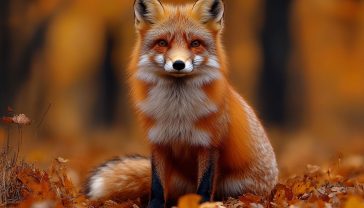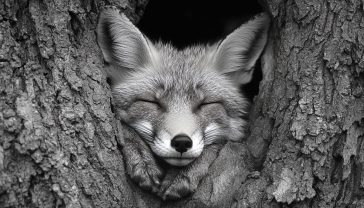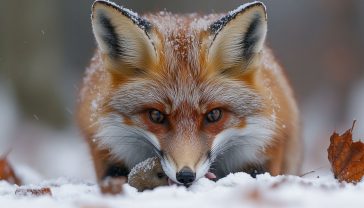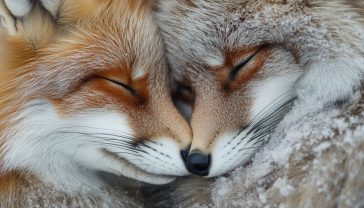When Do Fox Cubs Leave the Den? A Journey from Kits to Hunters
When do fox cubs take their first steps outside the den? These early adventures are crucial for their growth. Explore how and when these young foxes start their journey to independence.
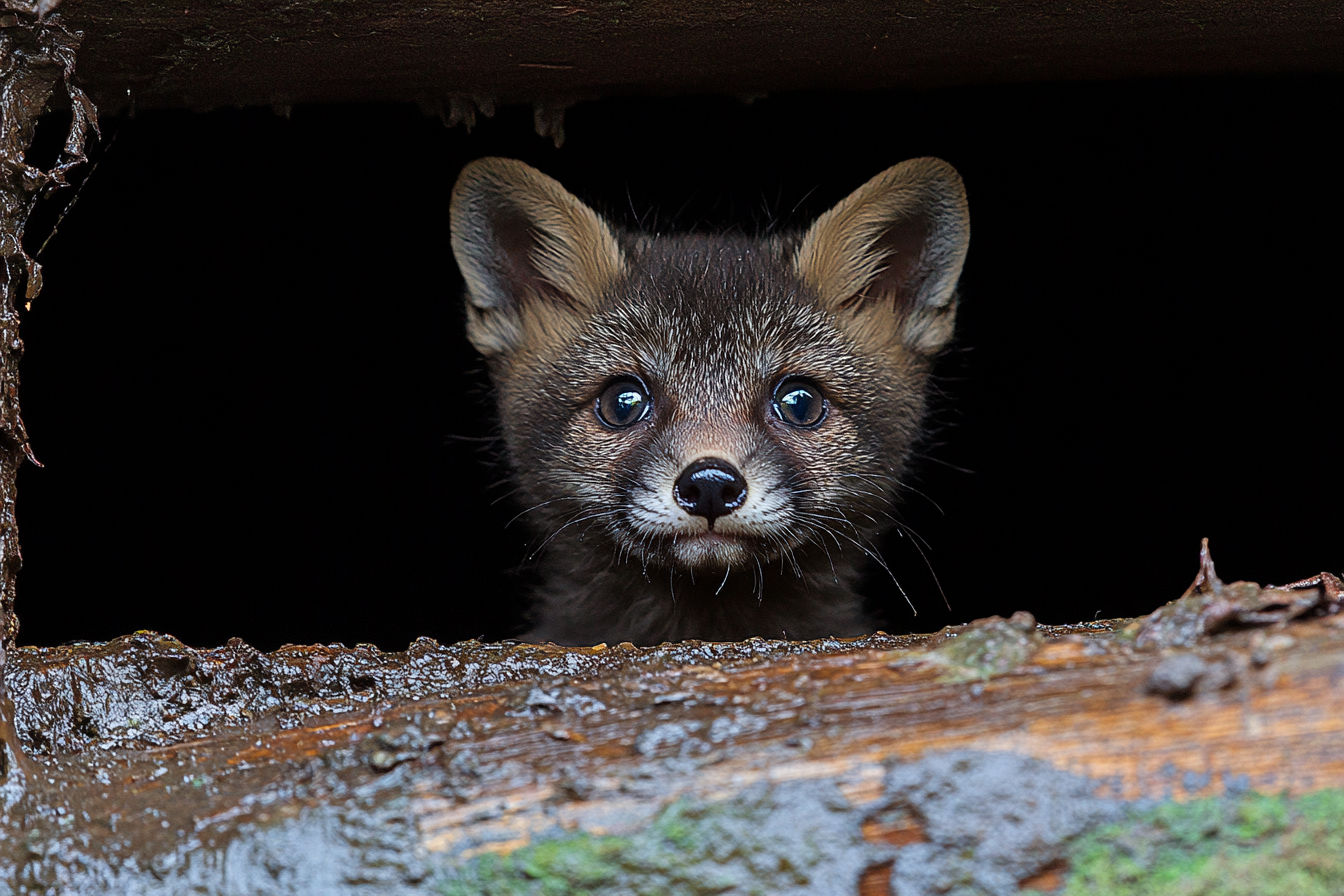
This post may contain affiliate links. If you make a purchase through these links, we may earn a commission at no additional cost to you.
Did you know that fox cubs, those fluffy bundles of curiosity, take their first cautious steps outside the den at just 4 to 5 weeks old? These tentative outings mark the beginning of a remarkable journey from total dependence to fierce independence. But what happens during these crucial early stages of a fox cub’s life? How do they develop the cunning and agility that define adult foxes?
Let’s explore the fascinating path of these young canids—from their earliest days hidden underground to their bold ventures into the wild.
Early Days: Blind, Helpless, and Hidden
Fox cubs—also known as kits or pups—enter the world blind, deaf, and utterly reliant on their mother, the vixen. For the first few weeks, the den serves as a sanctuary, offering warmth, protection, and a place free from predators and harsh weather.
Covered in soft, grey-brown fur, these newborns open their eyes after about 10 to 14 days. As their hearing develops shortly after, they begin to respond to sounds, though their movements remain clumsy. During this period, the vixen rarely leaves their side, nursing and grooming them while the dog fox, if present, provides food for the family.
Surprising Insight: Did you know that the vixen sometimes uses multiple dens? This strategy helps protect her young from predators by moving them between safe locations if a threat is detected.
The Importance of the Den: More Than Just Shelter
Fox dens—often dug into sandy soil, under tree roots, or in abandoned burrows—serve a purpose far beyond mere shelter. These dens are life-saving havens where fox cubs spend their most vulnerable weeks, hidden from predators like badgers and large birds of prey.
Interestingly, vixens don’t always stay in a single den. If danger is suspected nearby, she may move her cubs between several dens in what’s known as “den shifting.” This cautious behaviour reduces the risk of predators locating the family.
Fresh Perspective: In urban environments, foxes typically adapt by using garden sheds, under decking, or even quiet corners of parks as dens—showcasing their remarkable adaptability.
First Steps: Cautious Forays Beyond the Den
By 4 to 5 weeks old, curiosity takes hold. The cubs begin venturing outside—but only briefly and never far from the entrance. These first excursions are essential, allowing them to discover the world while staying close enough to dart back to safety if danger looms.
Playful interactions dominate these early outdoor adventures. Chasing, pouncing, and mock-fighting with siblings aren’t just for fun—they help sharpen hunting skills and social instincts vital for survival. This period also sees the introduction of solid food, as parents bring back prey, teaching the cubs the scent and taste of future meals.
Rhetorical Question: How else could these playful romps prepare them for the challenges of life beyond the den? Every tumble and chase builds the agility and cunning that define an adult fox.
The Role of Play in Fox Cub Development
Play is more than mere amusement for fox cubs—it’s essential training. Those energetic games of tug-of-war with sticks, mock ambushes, and wrestling matches help develop muscles, reflexes, and problem-solving skills crucial for hunting.
Fox cubs also establish social hierarchies through play. Dominant cubs tend to take leadership roles during group activities, while submissive ones learn to navigate these dynamics—a key survival skill when facing competition in the wild.
Behavioural Insight: Research shows that fox cubs who engage more in play have higher survival rates, as they better develop the motor skills and strategic thinking needed for hunting.
Building Confidence: Expanding Horizons
As the cubs approach 8 to 10 weeks old, their confidence soars. Short explorations give way to longer journeys, and soon they accompany adults on hunting trips. This is where critical lessons are learned: stalking techniques, pouncing precision, and even recognising potential threats.
Observational learning plays a key role. Cubs closely watch their parents, mimicking behaviours essential for catching prey like rodents, birds, and insects. These outings develop hunting prowess and teach the young foxes how to navigate their environment safely.
Species-Specific Insight: Red fox cubs (the most common species in Britain) excel at adapting their hunting strategies, sometimes watching older foxes for hours before attempting their own catch.
Learning to Hunt: Techniques and Challenges
Hunting is a skill perfected through practice. During hunting excursions, fox cubs watch and mimic adult techniques—stalking prey quietly, listening for rustling sounds, and perfecting the signature “mouse pounce” to surprise small mammals.
However, hunting is no easy task. Young foxes must learn to distinguish between viable prey and potential threats. Failed attempts are common, but each teaches valuable lessons in patience, stealth, and timing.
Did You Know? The “mouse pounce” isn’t random—foxes often use the Earth’s magnetic field to align themselves when pouncing, increasing their success rate.
Urban vs. Rural Fox Cubs: Different Paths to Independence
Not all fox cubs face the same challenges. Urban foxes, for instance, adapt their diets to include discarded food and learn to navigate human environments—crossing roads and avoiding domestic pets. In contrast, rural foxes rely more on hunting live prey, learning to navigate open fields, forests, and farmland.
Key Difference: Urban fox cubs may remain close to their birth territories longer due to plentiful food sources, while rural cubs frequently disperse sooner to claim hunting grounds.
Rhetorical Question: Could this urban adaptability explain why fox populations thrive in cities like London? It certainly showcases their remarkable intelligence.
Night Explorations: Fox Cubs and Nocturnal Behaviour
Foxes are primarily nocturnal, and young cubs gradually adopt this lifestyle. As their confidence grows, dusk becomes the backdrop for their exploratory adventures. Under the cover of night, cubs develop keen senses of hearing and smell—crucial for detecting prey and avoiding predators.
Moonlit nights often inspire longer hunting lessons, while darker nights may limit movement due to increased risks. This nocturnal rhythm ensures that by the time dispersal arrives, fox cubs are fully adjusted to life under the stars.
A Month-by-Month Timeline of Fox Cub Growth
Here’s a quick snapshot of a fox cub’s journey:
- Birth (0-2 weeks): Blind, deaf, and dependent; eyes open around day 10-14.
- 2–4 weeks: Hearing develops; increased mobility within the den.
- 4–5 weeks: First steps outside the den; play and exploration begin.
- 8–10 weeks: Accompany adults on hunting trips; learn stalking techniques.
- 3–4 months: Hunting independently; family unit starts to disperse.
- Autumn: Cubs leave to establish their own territories.
The Final Transition: Independence Beckons
By the time they reach 3 to 4 months old, fox cubs are ready for independence. Capable of hunting small prey and navigating their surroundings, they spend less time near the den. The once tightly bonded family group begins to disperse.
Come autumn, most young foxes have left to establish their own territories. However, some may linger longer if food is plentiful or territory scarce. This delay allows them extra time to refine hunting skills and social behaviours—crucial advantages in the wild.
Fresh Perspective: Not all fox cubs disperse at the same rate. Studies indicate that urban foxes sometimes remain close to their birth territories, taking advantage of abundant food sources and safer environments.
Conclusion: From the Shadows of the Den to the Wide World
The journey of a fox cub from helpless newborn to independent hunter is a tale of growth, learning, and survival. From those first tentative steps outside the den at 4 to 5 weeks old to establishing their own territories by autumn, fox cubs undergo an extraordinary transformation.
Their story reminds us that every confident, cunning adult fox we see once took cautious steps under the watchful gaze of its mother. Nature’s rhythms continue, with each new generation ready to take its place in the wild.
Next time you spot a fox darting through the undergrowth, remember—their journey began in the quiet safety of a den, with tentative steps that led them to a life of independence and adventure.

